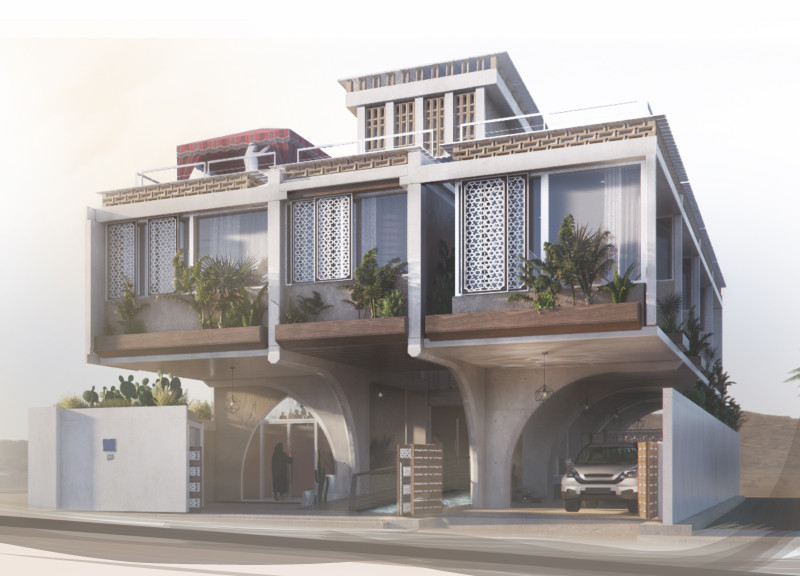5 key facts about this project
This project is designed primarily for [insert primary function, e.g., residential, commercial, cultural use], allowing it to cater to a variety of users and activities. The layout promotes a seamless flow between spaces, accommodating both private and communal activities. Each area is purposefully crafted, emphasizing use while maintaining a cohesive visual language throughout the building. By prioritizing functionality, the design elevates everyday experiences, encouraging users to engage with their environment in meaningful ways.
A distinctive characteristic of this architectural design is its materiality, which thoughtfully incorporates both local and innovative materials. The facade features a combination of concrete and glass, striking a balance between durability and transparency. This choice not only contributes to the structural integrity of the building but also facilitates a strong connection to the surrounding landscape. The use of wood and stone elements in specific areas softens the overall appearance and brings warmth to the interiors, creating spaces that feel inviting and comfortable.
Attention to detail is apparent in various aspects of the project, where unique design approaches enhance both the aesthetic and functional qualities. For instance, large windows are strategically placed to maximize natural light and create a visual dialogue between inside and outside. This consideration for natural light not only reduces reliance on artificial lighting but also improves the overall well-being of occupants. The design further incorporates sustainable features such as green roofs and rainwater harvesting systems, showcasing a commitment to environmentally responsible architecture.
Landscaping plays a pivotal role in the integration of the building within its setting. The site layout respects existing natural features, contributing to an outdoor environment that encourages social interaction and recreation. Each outdoor space is designed with specific activities in mind, allowing for communal gatherings and moments of solitude alike, which reflects a deep understanding of the needs and aspirations of the users.
The project embodies modern architectural ideas that challenge traditional notions of space. It emphasizes flexibility, with spaces that can adapt over time to meet changing needs. This adaptability is crucial in a rapidly evolving urban landscape, helping to future-proof the building while maintaining its relevance in the community.
Moreover, the project draws inspiration from local culture and history, weaving these narratives into its design. Elements of traditional architecture are reinterpreted in a contemporary context, providing a sense of place that resonates with both residents and visitors. This cultural sensitivity is an integral aspect of the project, allowing it to serve as a landmark within its urban context.
The consideration of user experience extends beyond aesthetics and functionality, fostering a sense of community and belonging. The building is designed not just as a physical structure but as a catalyst for interaction among its users. Spaces are arranged to encourage movement and engagement, making it a lively hub within the community.
For further insights into this project, including architectural plans, sections, and design details, it is encouraged to delve deeper into the presentation. Exploring the architectural ideas and elements showcased will provide a fuller understanding of the thought processes and design methodologies that underpin this impressive architectural endeavor.


 Hadi Al Gharib
Hadi Al Gharib 























